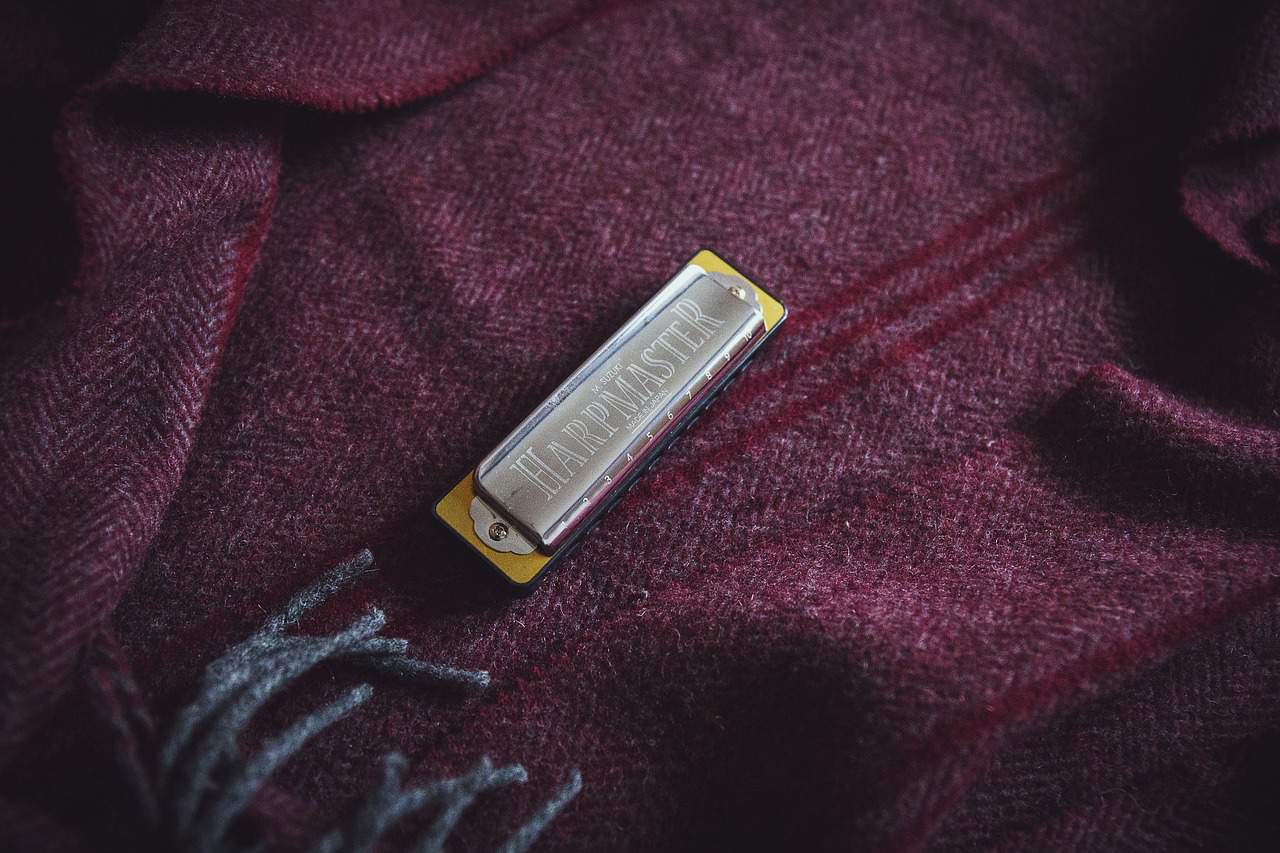
You’ll find a lot of advice out there telling you how to play harmonica. Which makes sense; it is, after all, one of the most affordable, most portable, and most versatile instruments you’ll find. The basics of harmonica are very easy to learn—the majority of people can at least make a note sound the very first time they pick one up—which is one of other things that makes it so popular among people who want to learn to play music.
But there’s a catch.
Playing the harmonica well, however, requires just as much attention to technique as any other musical instrument. There’s no substitute for sustained practice when it comes to mastering the harmonica, but there is some advice you can follow to get off to the right start. The tips and tricks below will start you on the path to musical success.


Jessica Simms is a saxophonist and life-long student of music. She works as a freelance writer and ghostwriter in Pittsburgh, PA.
If you’re a complete beginner, you might not realize there are different styles of harmonica out there. Which one you buy will have a big impact on how easy it is to learn and play, and how many different notes and effects you can get out of the instrument.
The two most common types of harmonica are diatonic and chromatic. Diatonic harmonicas are tuned to a specific key, and are capable of playing notes only within that key. A chromatic harmonica includes the full 12-note chromatic scale that is used for western music. A beginning player will want to buy one or more diatonic harmonicas to learn on.

The good thing about diatonic harmonicas is that you can use the same technique across keys. The only difference between them will be what notes sound when you play in a given position. You can also adapt the same basic technique to other styles of harmonica, so learning on a diatonic gives you a good base of knowledge to draw on as you progress.
Of course, even within the category of diatonic harmonicas, there are tons of options to choose from. Harmonicas range from cheap wood and aluminum designs to handcrafted professional instruments costing hundreds of dollars. As a beginner, you want to buy something that’s in the middle of these two extremes.
A cheaply-made harmonica will be inconsistent in terms of sound and playability, which is frustrating for a beginner. You can find a lot of great harmonicas in the $30-$50 price range that are easy to play and sound great, so you don’t have to spend a lot to get a good instrument.
You can find diatonic harmonicas in all 12 keys. If you only want to buy one to start, get one in the key of C. This is the most common key, making it the best option for learning, since you’ll be able to play the widest variety of different songs. If you know you’ll stick with it and want multiple key options, consider getting them all at once in a set. These will include a range of popular keys, often for less than you’d spend buying each individually.
What says class better than a feces pun proudly displayed in your guest bathroom? This lavatory mist features jasmine and red tea, but the real star is the image of Pootin sitting on his horse, with a caption above him saying “I cover your filthy secrets. I bring odor to its knees”.
You’re really not supposed to drink more than a glass of wine, but you feel like you could gulp down the entire bottle? This wine glass was made to help with that exact problem! Big enough to hold a whole bottle, this glass has I Only Have Time for ONE Glass of Wine written on it in huge, block letters.
Make sure no one ever comes near your spare keys! Let’s face it – doormats and flower pots don’t make for the best hiding spots. After all, it’s where everybody keeps them. But hiding them inside fake, but realistic dog poop will surely do the trick of repelling potential thieves.
If your cat could talk, you’d definitely get into trouble for buying this. But she can’t, so you can go about your business, trying to make your loved ones think she can. This gift box is empty, but it features images of the animal translator collar that’s allegedly inside.
If regular journal keeping just isn’t something you can see yourself doing, Keri Smith has the right task for you. In Wreck This Journal, she invites you to poke holes through pages, deface scrapbook photos, and the like. If you’re wondering what exactly you’d end up with, you know what to do.
Be the author of the next book you’ll read. If that sounds interesting, get your hands on Finish This Book, the work of bestselling author Keri Smith and, of course, yourself. You’ll start by undergoing secret intelligence training, but nobody really knows where your journey will take you.
There’s no way to track time that’s quite as mesmerizingly beautiful as with this unique hourglass. Placed on an elegant wooden base, it uses a hidden magnet to pull down ferrous sand. While falling, the sand creates lovely stalagmites you can admire for a lot longer than the one-minute countdown.
Take your gaming sessions to a whole other level by using a great-looking, high-performance keyboard. Its top-quality injection molded keycaps make it perfect for gamers, programmers and writers alike. LED effects with three different brightness settings add a touch of cool to your devices.
Learn how to take truly stunning photos without having to memorize any technical terms. This book contains only information that’s useful to you when you’re ready to snap that perfect shot. Not to mention that it’s packed with gorgeous examples of professional photography.
If clothes make the man, do they make pets, too? If so, you’re in for a real treat! This cat outfit includes a sheriff onesie and a hat with a badge. They’re easy to put on, so you don’t have to worry about your pet getting mad at you. And then they can go exercise their right to boss everyone around.
Let Pikachu follow you wherever you go, just like he did with Ash! This eye-catching hat features the face of the adorable Pikachu, with his ears sticking out to make an even bigger impression. Since it has a snap closure, it can fit kids of all ages and, yes, adults, too.
Now you can finally realize your lifelong dream of becoming the ultimate bird watcher slash opera goer slash intelligence agent! You only need to have these mini binoculars on hand wherever you go. Since you won’t damage them by getting them wet, nothing’s out of bounds!
Give the universe a lick with this unique mix of lollipops. The back of each is black, resembling the outer space, while the front is clear, adding depth to the image. They come in a range of flavors, so there’s something for everyone. Serve these at your next space party or devour the cosmos yourself!
Give your friends and family a proper scare when they least expect it! With the help of this mix of decals, you can turn your toilet into a place from which emerge yucky octopus tentacles and even decomposing zombie hands. Simply stick them onto the seat and cover, and wait to hear the first screams!
Make sure your next camping trip doesn’t get interrupted by any sudden deaths. Bringing the world’s toughest tent should be more than enough. Made from thick, tear-resistant materials and easily packable into the tiniest bag, it’s the ideal companion for two people embarking on a dangerous trip.
Turn your backyard into a real amusement park with this incredible water slide! Twenty five feet long and equipped with sprinklers, it’s perfectly capable of entertaining your entire family. Since it’s made of embossed PVC, you don’t even need to add soap to achieve smooth rides.
Drinking only one cup of coffee a day has finally been made possible! Big enough to hold 64 ounces of liquid, this mug is the ideal gift for that one friend who can’t seem to stop drinking coffee, but if they don’t like it, you can also use it as a container for, well, 64 ounces of stuff.
What better way to cool off than by having a unicorn spray you with water from his magic horn? This huge inflatable toy unicorn doubles as a sprinkler for hot summers. Compatible with most garden hoses, it makes playing in the yard super fun for the entire family. Or just yourself – no one’s judging.
If there ever were a marathon in writing stuff by hand, you’d be the first one to cross your t’s and dot your i’s. Designed to minimize the strain on your fingers and hand, this pen fits snugly, yet comfortably around your index finger. As a result, you need to put in less effort to actually do the writing.
Had enough of classic LEGO building kits? Okay, it sounds completely absurd now that we say it, but you might still have a lot of fun building a ship in a bottle using only LEGOs. The kit includes everything from the bottle and wax seal elements to the ship with all its parts. Anchors aweigh!
You don’t need to know how to read musical notation to play the harmonica. Similar to guitar, there is a unique method of notating harmonica music, called tablature (or tabs for short), that is much easier to learn and read than traditional notation. Even if you can read music, using tabs instead can be helpful when you’re learning because it gives you information beyond simply what note you need to play.

Let me stop you right there. There’s good news…
In my experience, harmonica tabs are even easier to decipher than guitar tabs. They’ll generally consist of a number with an arrow over it. The number tells you which hole on the harmonica you should use, while the arrow will tell you whether you want to breathe in or out. If the arrow is pointing up, this indicates an outward breath, or “blow.” An arrow pointing down indicates an inward breath, or “draw.” In text-only tabs, these may be expressed using letters rather than arrows (B for blow, D for draw).
If there are multiple numbers under the arrow, this indicates you’ll be playing a chord instead of a single note. Blacked out squares between the numbers mean you should block those holes with your tongue so they don’t sound (more on this technique later).
You may also see symbols on the arrows in a tab. These indicate special techniques you should use along with the blow or draw. A single slash across the arrow means a bend of a half-step, two slashes indicate a bend of a whole step, and an open circle means an overdraw or overblow. If you don’t know what these terms mean, don’t worry—they’re more advanced techniques that you shouldn’t worry about as a beginner.
Understanding tabs is a lot easier when you have some in front of you. This page from Boston University has a lot of free tabs for you to explore and play that can help you as you’re getting the hang of the notation.
There are quite a few different ways you can hold the harmonica. Some methods are more advanced than others, and different techniques will be most comfortable for different styles of player. The method outlined below is a great beginner’s technique that will serve you well while you’re learning.
So let’s break it down:
At this point, you’re ready to get started. This positioning may feel uncomfortable at first, but the more you play the more you’ll get used to it. As you progress, it will start to feel so natural that you likely won’t even need to use your fingers to move your lips into position—they’ll know where to go from muscle memory alone.
It’s time to start making music! Producing sound on the harmonica is as simple as breathing. The tricky part is making sure you’re playing the right note, and only the notes you actually want to hear.
Eventually you’ll want to play multiple notes at once, but it’s important to first be able to isolate single notes before you move on to playing chords.
Now get this: there are two techniques you can use to isolate a single note on the harmonica.
I have to be honest…
If your plans for the harmonica are long-term, you might as well just start off with tongue blocking and skip the step of puckering. The puckering technique is easy for beginners but will not work for intermediate or advanced players. Tongue blocking, on the other hand, is something practiced by players at all levels, making it a far more versatile option.
Whichever technique you decide to use, your goal is to sound a single clear, strong note. Keep working at this step until you can consistently isolate a single pitch anywhere on the harmonica without any guesswork.
A scale is the musical term for when you play all of the notes in a given harmony in order from lowest to highest, or highest to lowest.
Learning to play a scale on the harmonica practices two things:
Drawing vs. blowing
Maybe the trickiest part about playing the harmonica is that each hole on the instrument will produce more than a single note. If you were to simply blow across the holes on a harmonica from bottom to top, it would go up the notes of a major chord (C, E, and G on a C harmonica) in a repeating sequence.
You access the notes in between them by drawing, or sucking air in through the hole rather than blowing air out through it.
Playing scales on the harmonica is the easiest way to secure in your mind which notes are produced by blowing, and which by drawing—and on which holes. The site Diatonic Harmonica Reference has some visual layouts you might find helpful as you’re learning how to navigate the instrument.
Once you’re able to successfully play every note in the scale, practice going from the bottom to the top and vice versa until you can do it cleanly and smoothly in both directions.
Moving from one hole to the next in order is the first step, but to play songs you’ll need to be able to jump straight to the note you need, regardless of which one came before it. This is a matter of training your lips and hands to know exactly where each note is located along the length of the instrument, and there’s unfortunately no shortcut to mastering it beyond a lot of practice.
Along the same lines, at this point you can start experimenting with chords. This means playing through multiple holes at the same time, but in a purposeful way. Try using your tongue to block only a single hole at a time, rather than blocking all but one, until you’re able to play the specific notes you need, without any interference from notes you don’t.
By now, you’ve successfully learned how to play harmonica. While there are advanced techniques we haven’t yet touched on, you have all the basic skills you need to play songs and even improvise on the instrument.

A lot of people want to learn how to play harmonica because they’ve heard it’s easy—and it is, if you start out from a good foundation. You don’t need any experience with music. There’s no assembly and no tuning—just pick it up and start blowing. Even just practicing a few minutes a day, you’ll be surprised how quickly you’re playing songs and making music.
The information in this article is enough to get you started, but there’s a whole world to discover once you start playing the harmonica. If you pick up some extra tips along the way, be sure to share them in the comments. We hope you have a blast broadening your musical horizons!
There are some notes on the harmonica that are particularly tricky for beginners to play. The two draw (pulling air in through the second hole) is notoriously hard to sound for a lot of people just starting out. You can find advice for overcoming this problem, but it often will just come down to lots of practice.
If, on the other hand, you were able to play the note before and it suddenly stopped working, the problem is more likely to be with the reed than with your technique. Sometimes the problem is simple, like a bit of spit or a stray nose hair trapped inside the harmonica. Try hitting the instrument against your leg or hand a few times then breathing through the hole—if it’s something small, this can often dislodge it.
If that doesn’t work, you’ll have to unscrew the cover and look inside the instrument to identify the problem. A toothpick makes a great tool for removing any debris stuck around or under the reeds.
For the most part, the harmonica is a very low-maintenance instrument. It’s a good idea to give it a wipe after each playing session and keep it in its case when it’s not in use, to prevent any dust from getting inside.
The reeds are the moving pieces inside a harmonica, and naturally wear out over time. You’ll be able to tell when a reed cracks because the corresponding note will suddenly be very out of tune (if it sounds at all).
Most beginner harmonicas are designed to be semi-disposable. If a reed breaks, it can’t be replaced; you just have to buy a new one. If you do have a harmonica with replaceable reeds, you can either invest in a harmonica repair kit and replace the reeds yourself or take it to your local repair shop.
You’ve heard people play bends, even if you didn’t know what they were at the time. This is the term for when a player starts below the note and swoops up into it. It’s most common in blues music, but is an integral part of the harmonica sound for many players.
Bending is not generally considered to be a beginner technique, but it is something you can start experimenting with once you’re able to successfully produce clear single notes and chords. The basic idea is to relax your lips, flattening the pitch to either a half-step or a whole-step below the note you want to land on, then gradually tightening your lips back to their standard position.
Bends are easiest to achieve on blown notes, but can be added to drawn notes as well with practice. It’s also easier to do them on lower notes than on higher ones, so start there if you’re looking to add this technique to your toolbox.
This one is a little bit trickier. Overblows can be very frustrating to learn and can take a lot of patience, and is definitely a more advanced technique that you’ll want to wait to work on until you’ve mastered the basics. When you are ready to add this technique to your repertoire, though, there’s a great explanation of it on the Dummies site.
Position has more to do with how you think about the notes than using a different technique. In 1st position, the key of the harmonica will be the key it plays in (so a C harmonica will be playing in C Major). In the other positions, a different note is treated as the tonic, or home note, of the instrument. Basically it’s a way to make a diatonic harmonica play in a key other than the one it’s named for.
Understanding harmonica positions means delving into a bit of music theory, and this can be tricky for a beginner. There are 12 total positions for each harmonica, which are numbered sequentially according to the circle of 5ths—in other words, you’ll go up the interval of a 5th to reach the next position.
Because the notes that are available don’t change, going to a different position will also put you in a different mode, another music theory term that has to do with the harmonic structure of a chord made from that scale. So if you’re using a C harmonica, the 2nd position will put you in G Mixolydian (also called G dominant or G blues), the 3rd will put you in D Dorian (also called D Minor), and so on.
This can be very tricky to make sense of if you’re a newcomer to playing music, but does greatly expand the harmonic potential of your instrument. Learning more about positions can also be a gateway into a deeper understanding of music, especially helpful for songwriters and improvisers.




Let us know your opinion